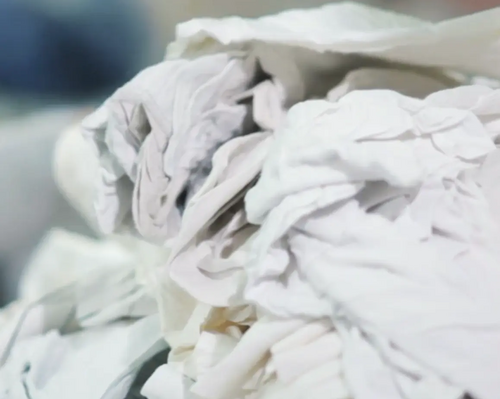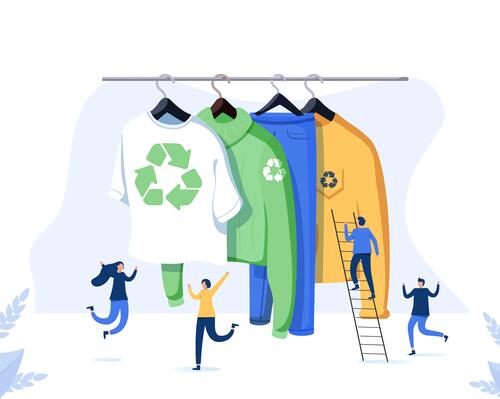Can all clothes be recycled?
Global fibre production hit a record 124 million tonnes in 2023. It’s more than doubled since 2000. 57% of that is polyester, and only 7.7% is recycled fibres (mostly from plastic bottles).
But why does every garment need brand new fibres in it? Isn’t it possible to recover fibres or fabrics from our unwanted wardrobes?
Often not. Clothing - with zips, elastic, buttons, and blended fabrics - can be very challenging to recycle.
If you look at the label in your clothing, you’ll probably see that it contains a mixture of fibres. Cotton fabrics are often made with a little elastane; wool is blended with polyester to make it washable.
Even after someone has removed the buttons, zippers and labels by hand, those fibres have to be separated if they are to be reused.
Blending happens not just at fibre level (wool reinforced with nylon), but also at yarn level (sparkly yarns in a fabric, or contrast topstitching applied to jeans), and at fabric level (clothing with different fabrics, such as patchworked coats or reinforced shoulders).
Mechanically recovering the fibres is a very intensive process. In Prato, Italy, an entire community has formed a giant wool recycling hub which processes around 15% of all recycled clothing.
They’ve been recycling wool since the 19th century. The sorting specialists, or cenciaiolis (artisans), are so skilled that they can sort wool clothes just by touching them to ascertain the fibre and blend. They build piles by colour, which means the final wool comes in a rainbow of shades without the addition of any more dye. The processed textile emerges as ‘fluff’, gets spun into yarn, and woven into woollen fabric under the name MWool.
However, this mechanical (and human) process is expensive and time-consuming. That's where chemical recycling sometimes comes in.
For instance, it’s possible to dissolve or melt one fibre while extracting the other. PET (polyurethane) can be extracted using heat, and Cellulose (used to make rayon, Cupro or Lyocell) can be extracted through dissolution.
The dream is to build a circular textile economy, where clothes are recycled into new clothes, instead of being dumped (which is known as a linear economy).










